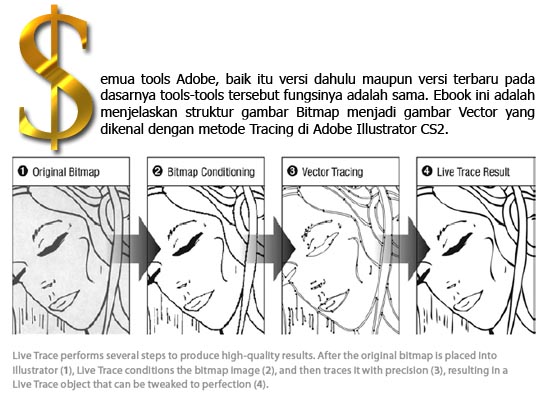

- Illustrator convert raster to vector using live trace software#
- Illustrator convert raster to vector using live trace free#

Rhino-exported illustrator files still need some touching up. If you have some praxis in modeling you will be able to create the objects in 3D and take advantage of the possibility to export multiple views.
Illustrator convert raster to vector using live trace software#
Sometimes I'm able to take advantage of Rhinoceros which is a 3D software that allows you to export a view (perspective, parallel) of your model as vector lines (*.AI files). I have done a few tries with livetrace in Illustrator but end up spending more time correcting or -in the best cases- using the results only partially.įor technical illustrations there seems to be no easy way around re-tracing the thing manually. Generating a vector version of a raster image is not a 'conversion' in the sense of converting a TIF to a PNG. Strictly speaking, a true 'conversion' would be a grid array of vector rectangles, which would have no practical advantage whatsoever over a raster image. It took me usually up to 12-20 hours of work per sketch. There is no 'conversion' between a raster image and a vector graphic. Even though I end up tracing the original image again, I do tend to have it done in less time than before. I found my digital tablet to be very effective for tackling this situations. I frequently have similar situations where I'm given some drawing -usually graphite pen drawings (sketchy, hairy lines sigh)- where drawing with the pen tool gets really tedious up to annoying. (a lot of people think other way, but imho, for inking is just like that.))
Illustrator convert raster to vector using live trace free#
And lately, using the free MyPaint, because it has quite a lot of settings(more than in many commercial packages) to control your stroke and does a fix in real time of the trembling stroke (btw, the reason why it takes more time inking with pen tablets is as the electro magnetic system andmaybe the resolution is not as accurate as your hand, pen and paper.Often a low resolution table, like Intuos Small, is not enough, and you need a bigger format for better control. Illustrator allows you to place raster (bit-oriented) images on a documents Artboard, manipulate them, and use its Live Trace facility to convert them into. Other ways I used is forcing Illustrator to do a kind of averaging, in stroke settings. It worked for me for producing game line-art from rasters (in a very similar style to comics drawings) Illustrators Live Trace (now called Image Trace) feature is an extremely quick way to convert hand drawn fashion flats or artwork to vector with the click. But you need to play a lot with the settings till you find the right ones for you. The user will see the three filter options. I've played quite with its settings, and while you won't get total control you can reduce it to quite an accurate result and few nodes. To use the tracer, load or import an image, select it, and select the Path Trace Bitmap item, or Shift + Alt + B. But it can be employed in a variety of other. In inkscape, you count on sort of Potrace(an excelent tracer, free) embedded there. Adobe Illustrators Image Trace Panel is a powerful tool, used by designers to convert raster images into vectors.


 0 kommentar(er)
0 kommentar(er)
